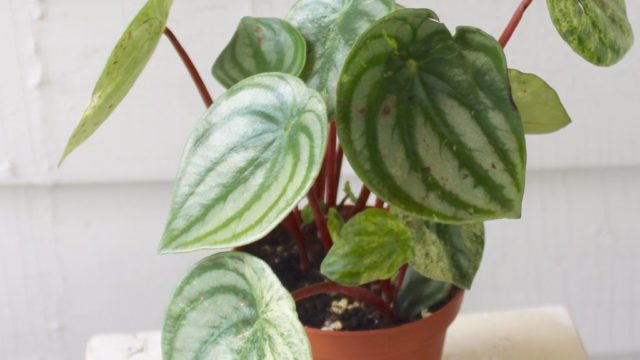
You are now officially invited to my peperomia party. What can be better than that? I know, add kitties and doggies into the mix too. Why? Because these babies are one of the best non-toxic indoor plants.
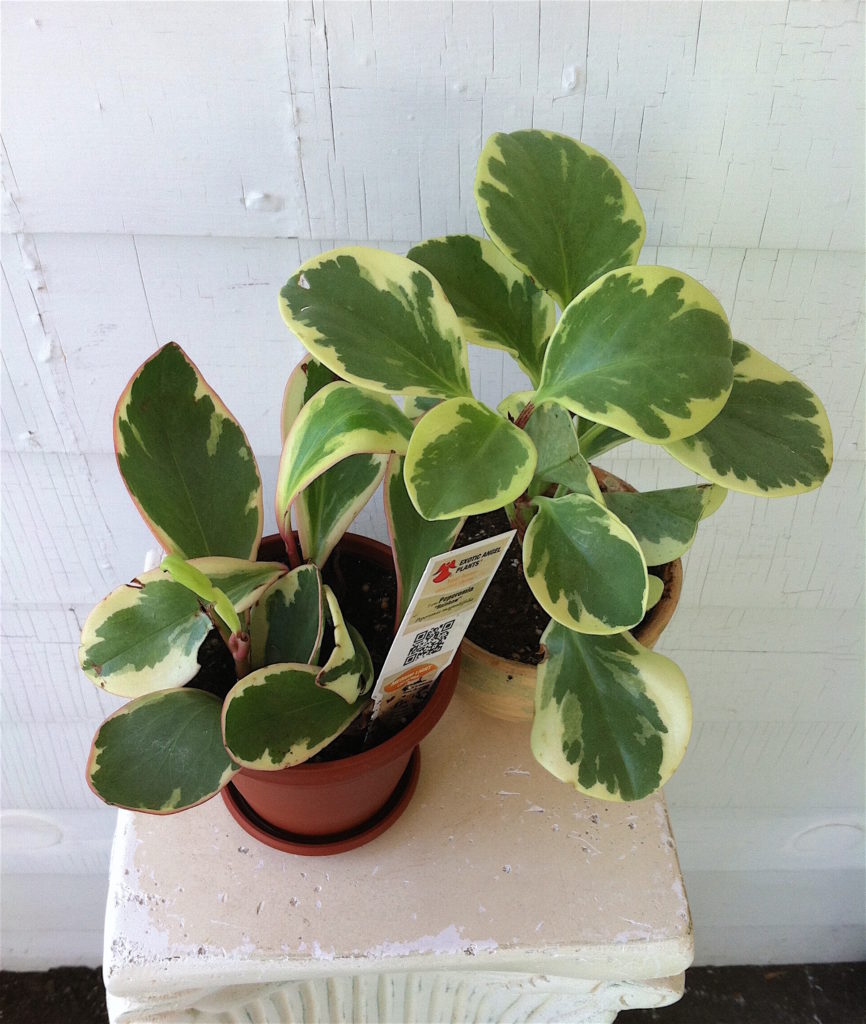
Told you I could make it better.
Like I’ve mentioned in previous posts, finding interesting pet safe plants can be tough. I personally like interesting leaves, and once I became more familiar with Peperomia, I realized I had been missing out on the plant world’s understated models.
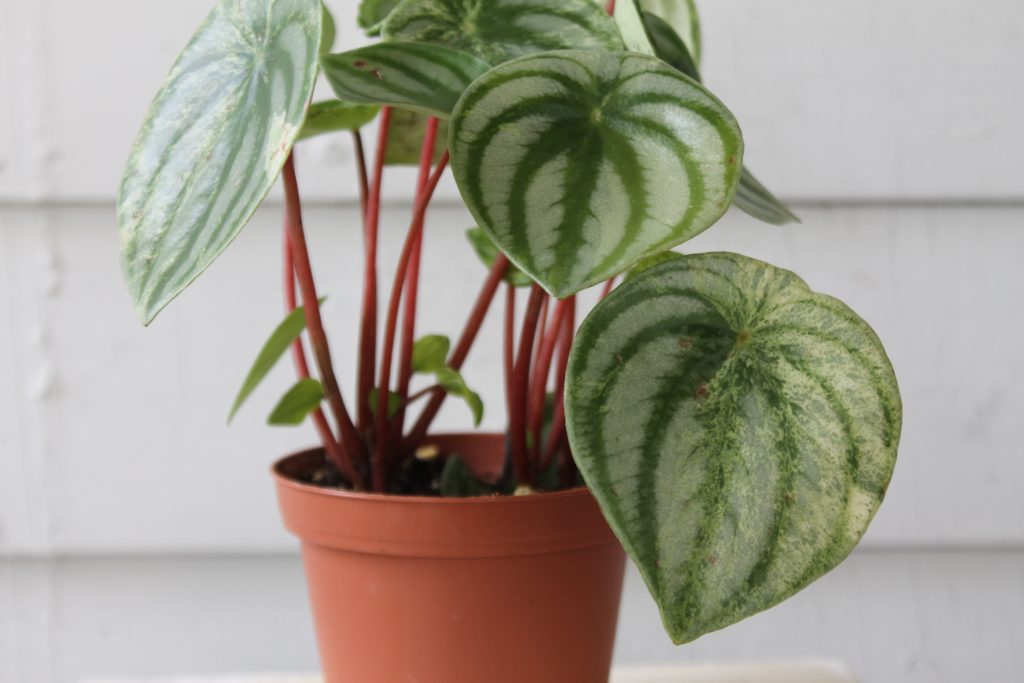
Completely non-toxic, the petite peperomia wins the prize for awesomest leaves. A bigger perk is their durability. It’s not a secret cats and dogs can act like a hot mess, so this is a quality pet-owners appreciate in plants.
Knocked over by cat? No problem.
Thrown to floor by dog? No biggie.
Elbowed accidently by human? These guys are troopers.
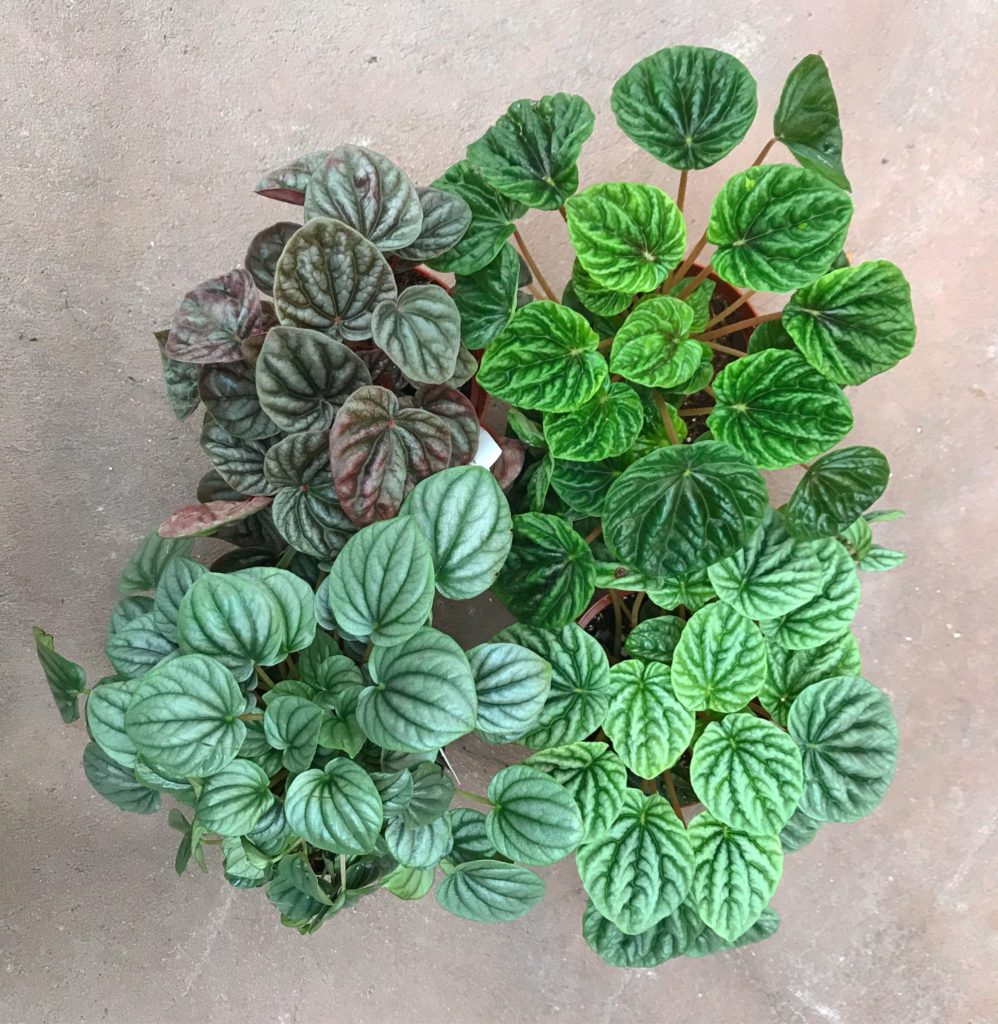
Peperomia Varieties
They don’t grow very big, so it’s easy to begin collecting a Peperomia Army (you know, for the apocalypse). Here are a few of the most common varieties that can be easily purchased in stores or follow the links to purchase online:
Variegated Peperomia (Peperomia obtusifolia)
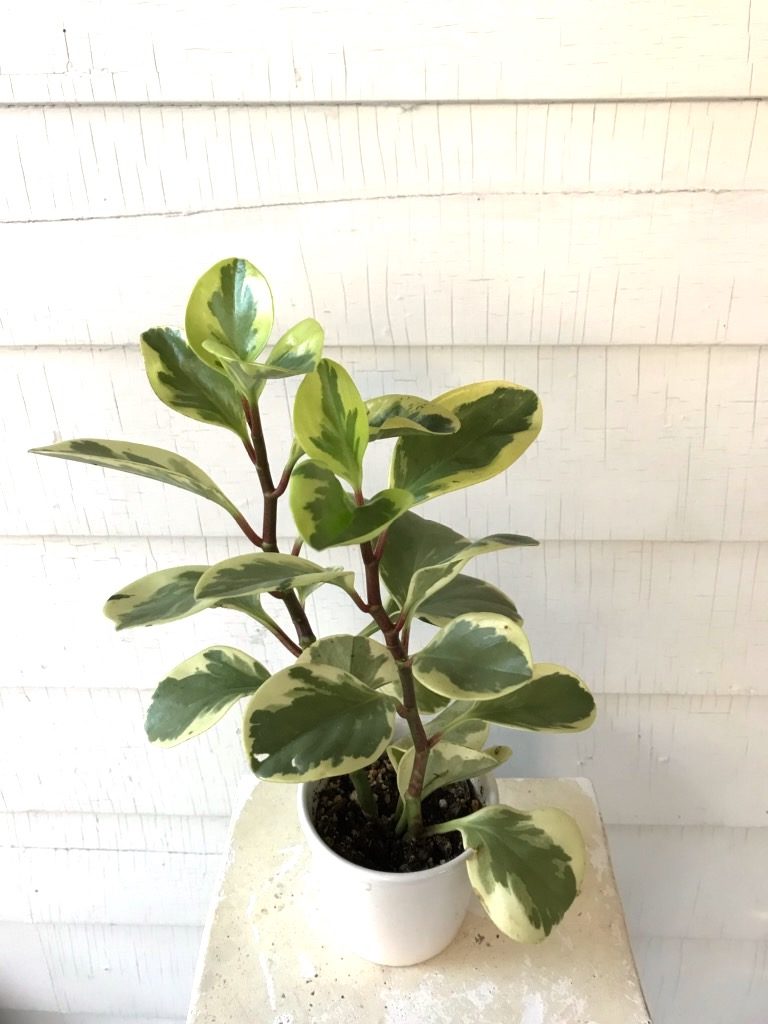
Watermelon Peperomia (Peperomia argyreia)
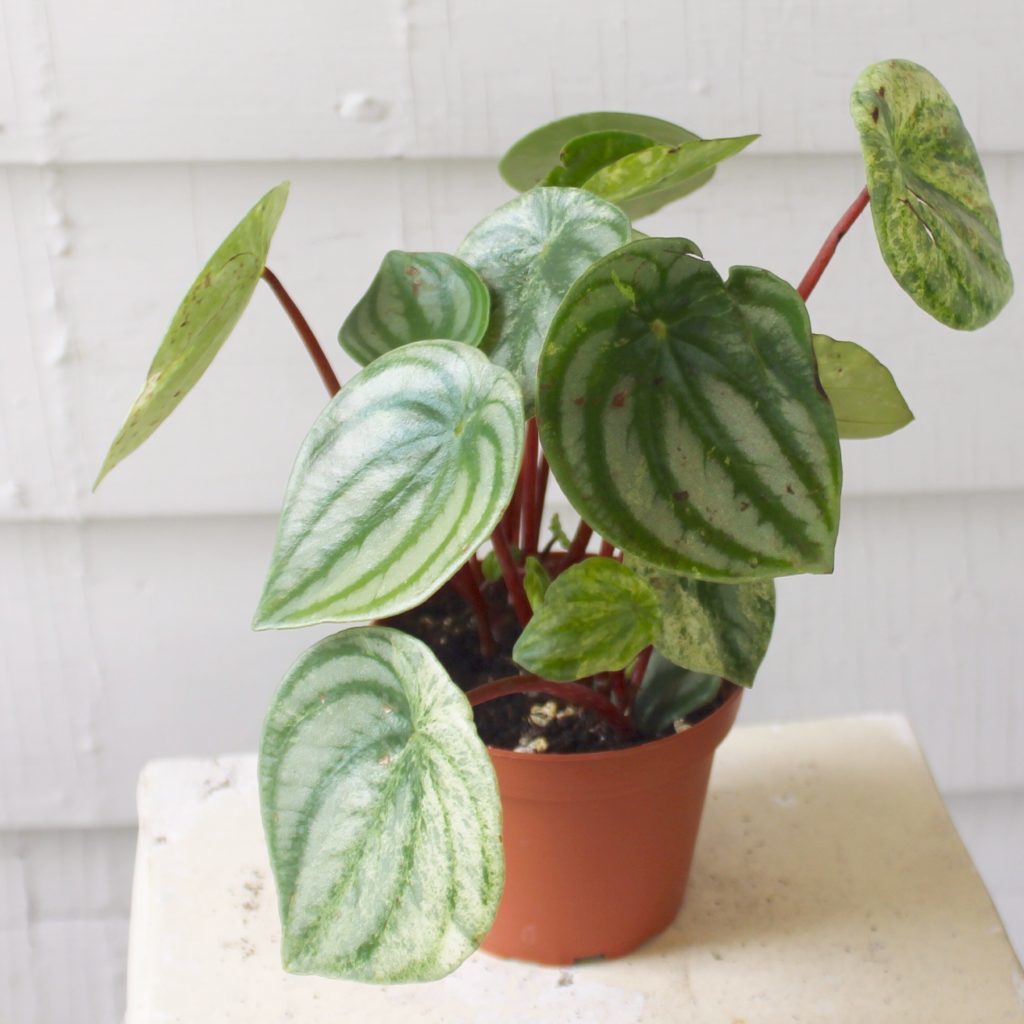
Red-edge Rainbow Peperomia (Peperomia clusiifolia)
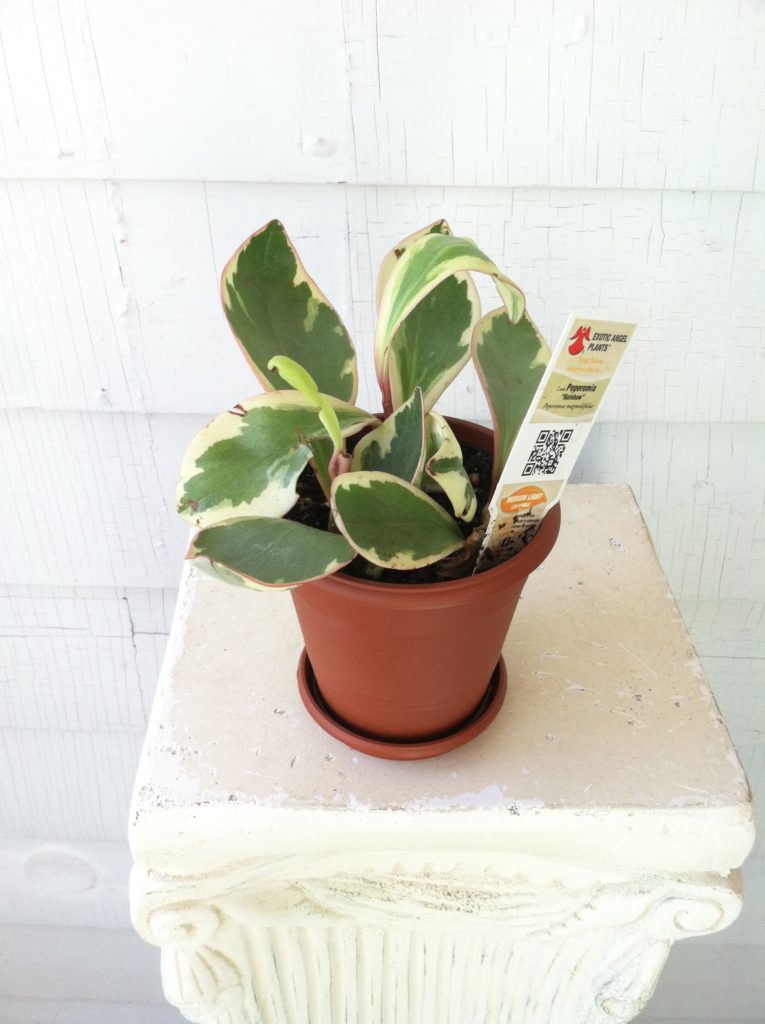
Metallic Peperomia (Peperomia rosso)

Pink Lady Peperomia (Peperomia griseoargentea)
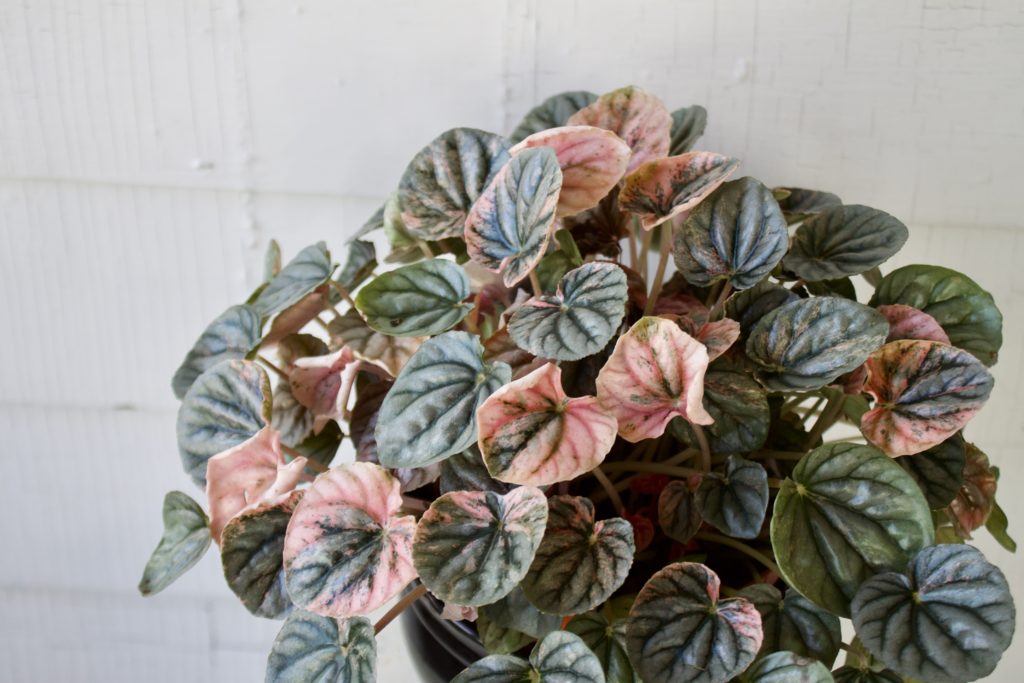
Silverleaf Peperomia (Peperomia griseoargentea)
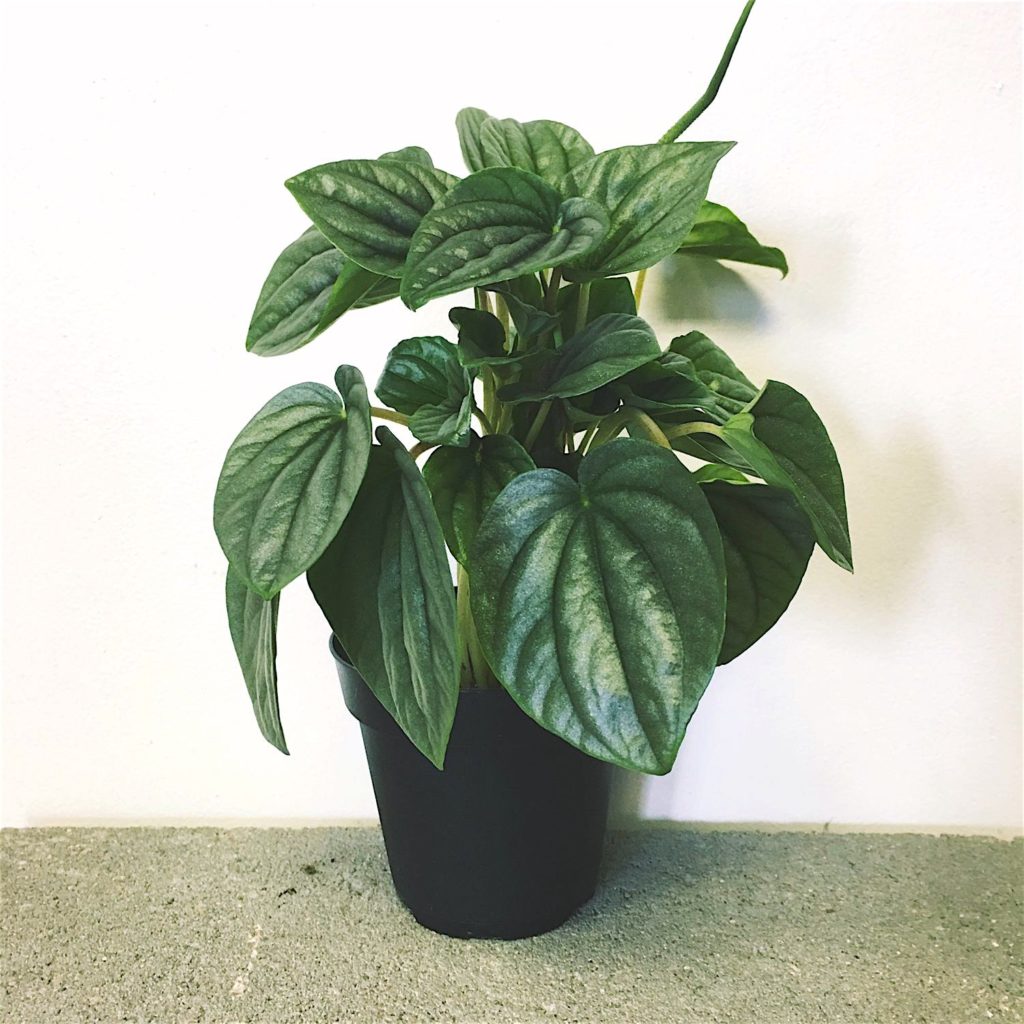
Jayde Peperomia (Peperomia polybotrya)

Red Ripple Peperomia (Peperomia caperata)
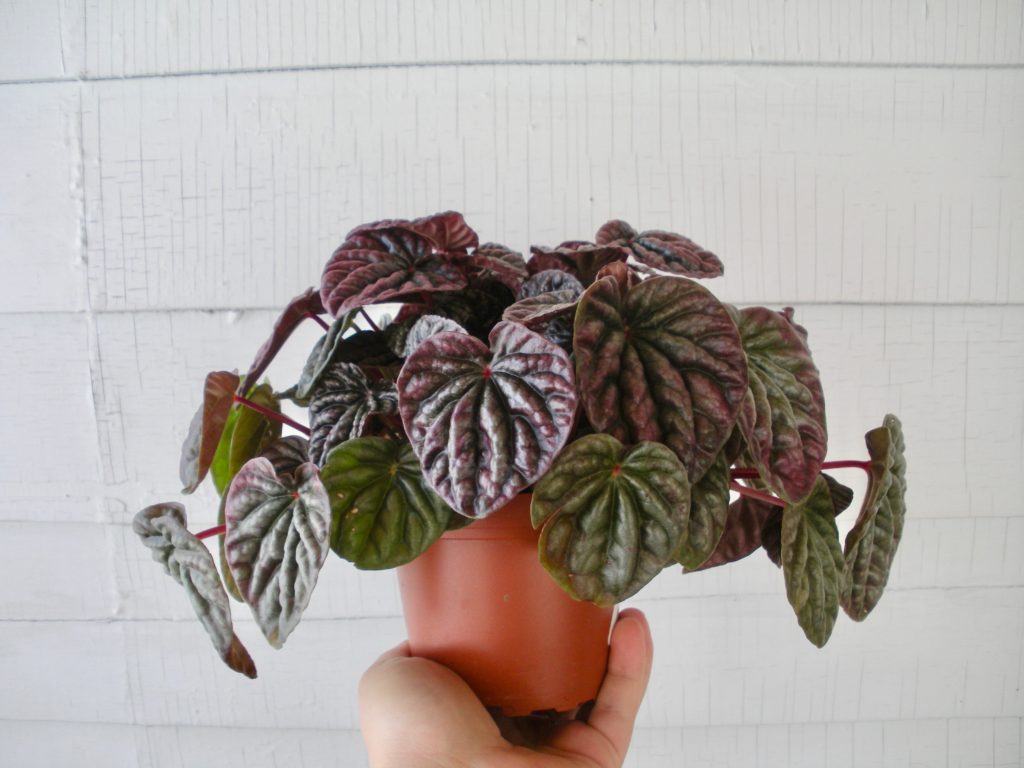
Pixie Peperomia (Peperomia orba)
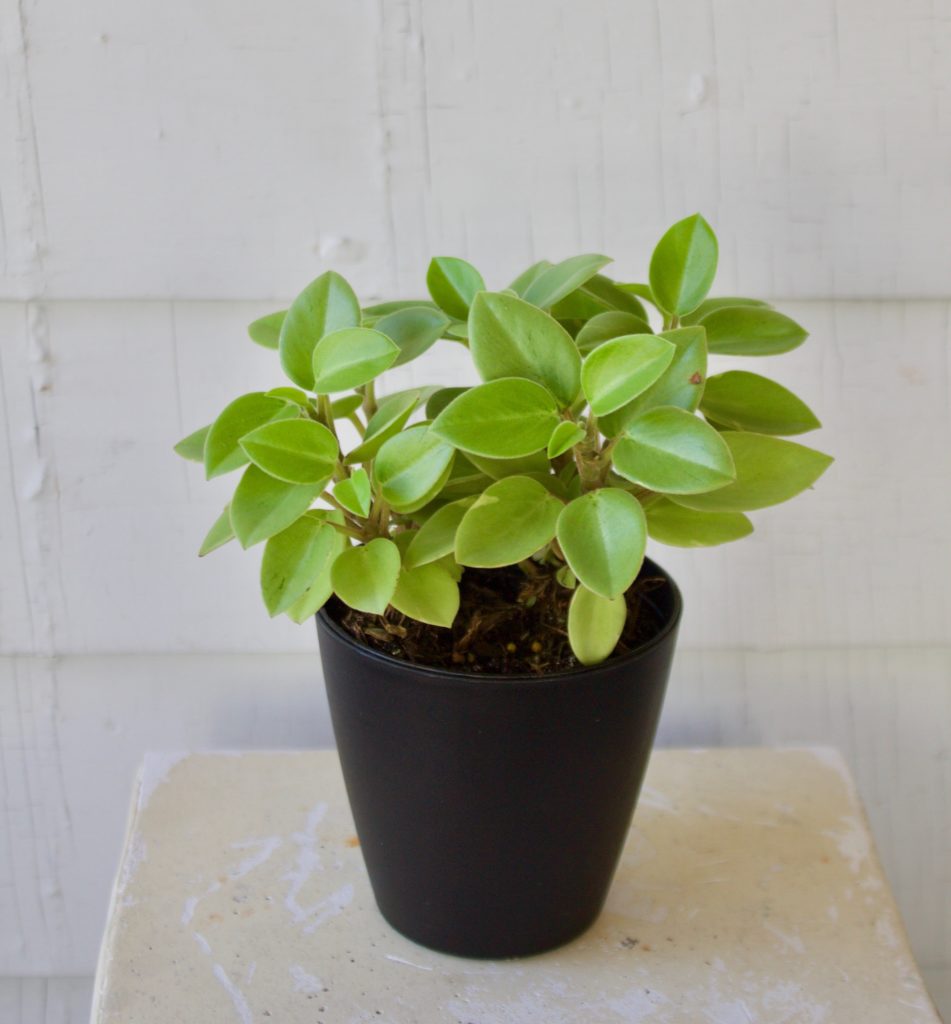
Peperomia Hope (Peperomia rotundifolia)
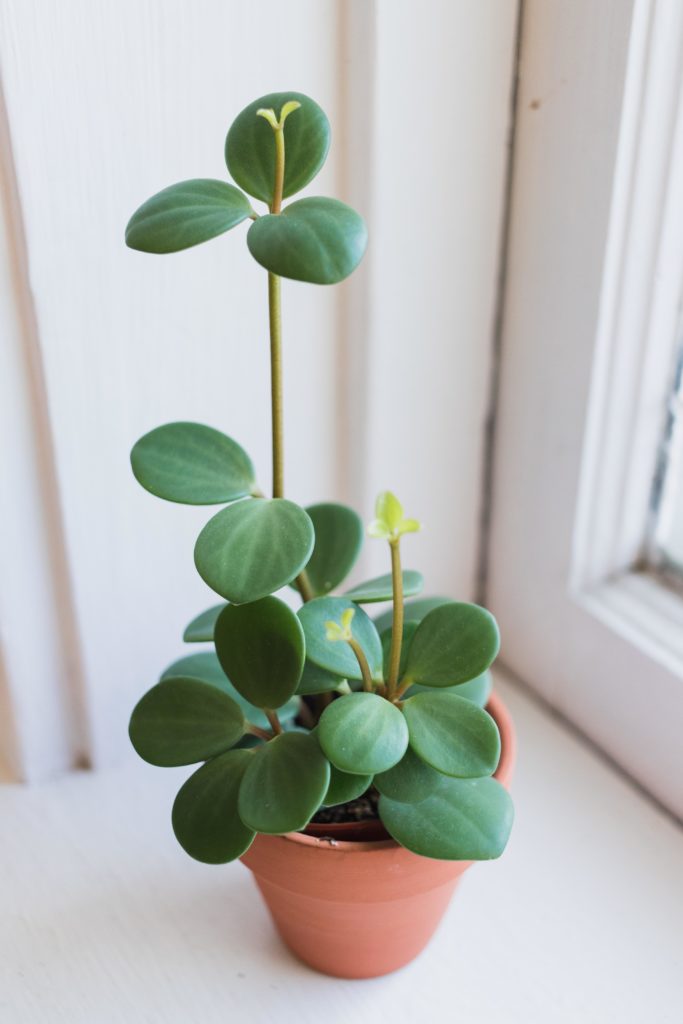
Baby Rubber Plant (Peperomia obtusifolia)
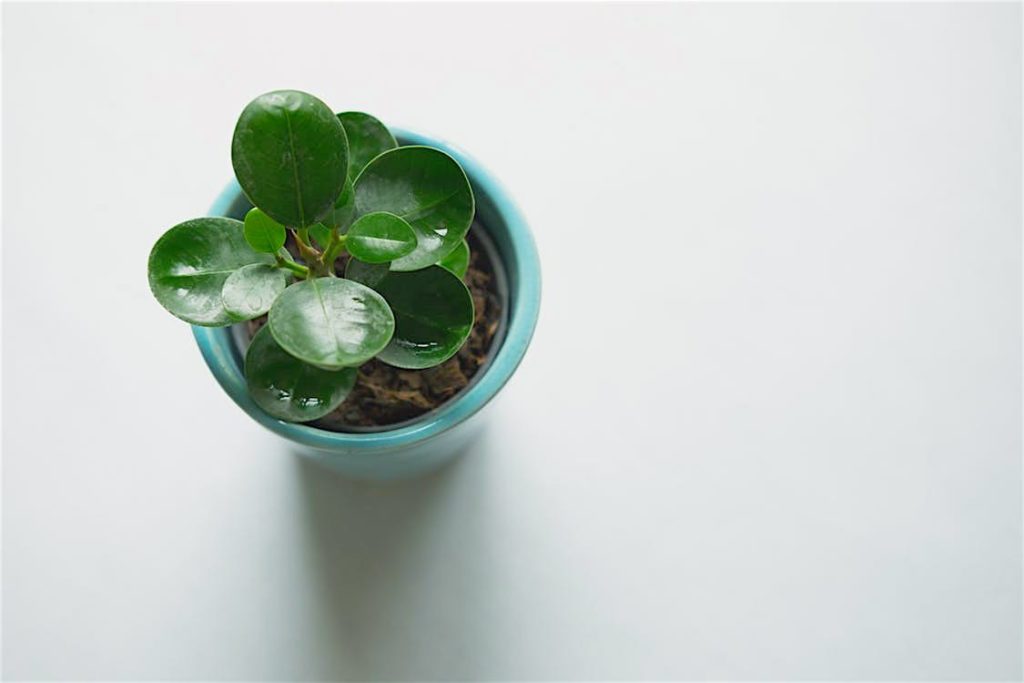
Felted Pepperface Peperomia (Peperomia incana)
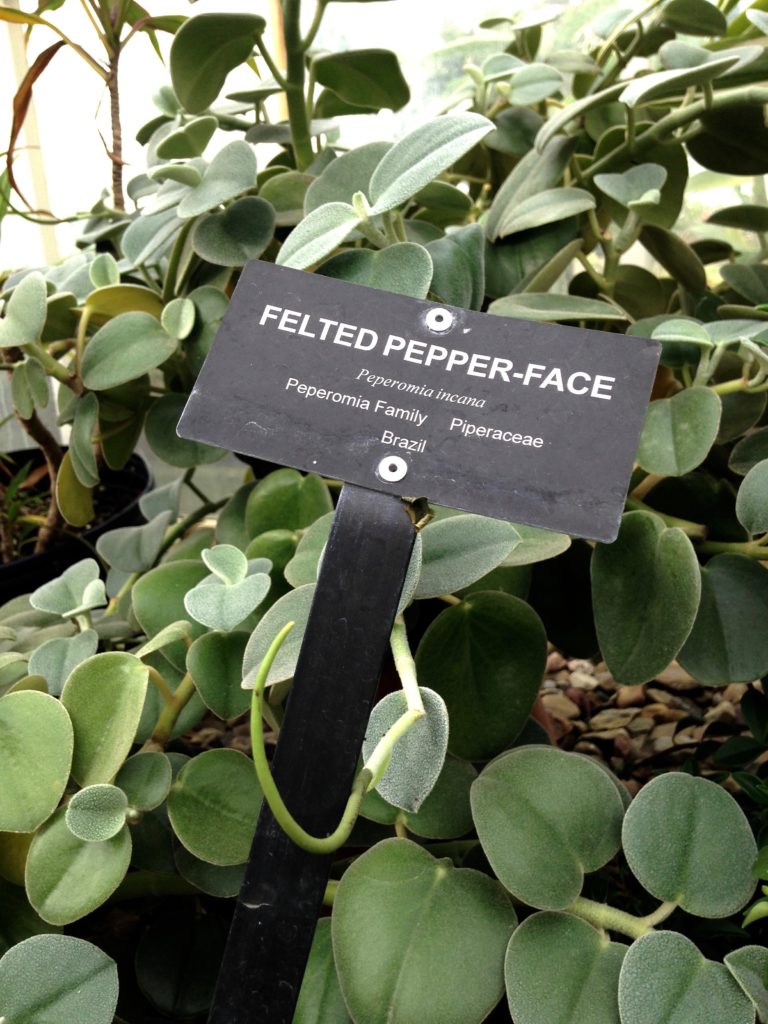
Keeping Them Happy
I have all of my peps in simple ceramic white pots or small plastic pots. Begrudgingly, they will tolerate planters sans drainage holes but that’s not ideal. Really, peps prefer a medium amount of moisture; water sitting in the bottom of a planter leads to root rot and dropping leaves. And there goes that plant army…

Actually, Peperomias are not technically succulents, despite the chubby leaves. A native of Brazil, they belong to the Piperaceae family. Bright locations with non-direct sunlight is best, like behind a sheer curtain. They hate hot, direct sun – this scorches leaves, leading to sad blotches then partially dried bits that looks rather unsightly.
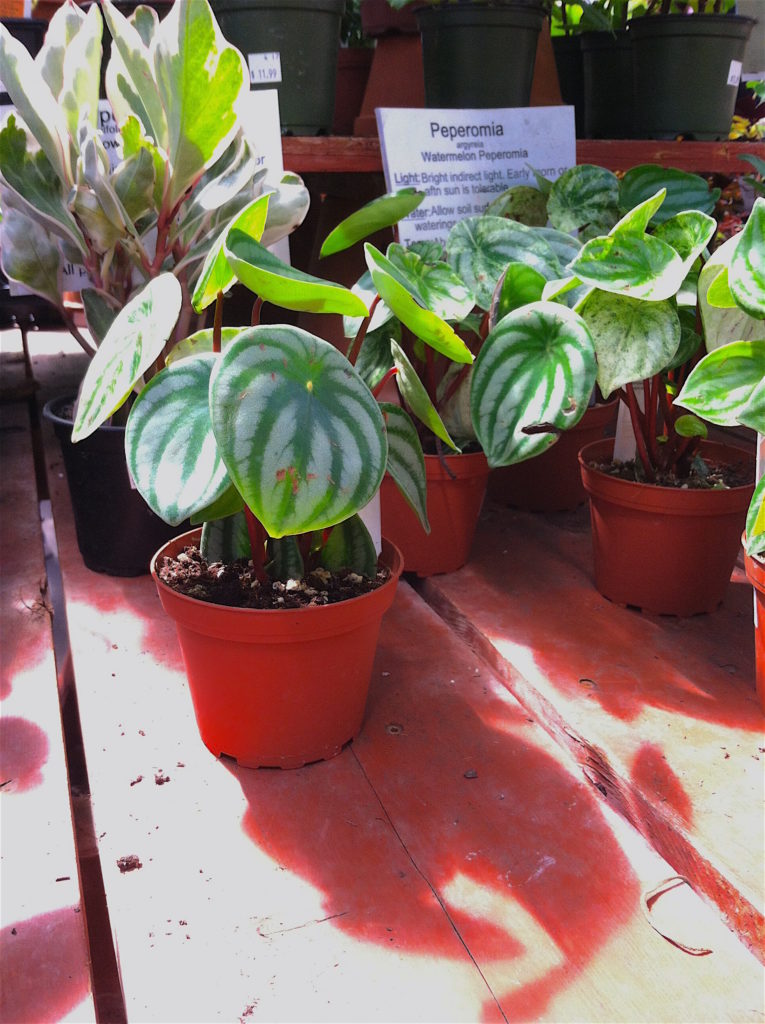
A snazzy tip: rotate plants every week so they don’t end up lopsided. Like all indoor plants they grow towards the light, so keeping them rotated on a regular basis keeps everyone happy.
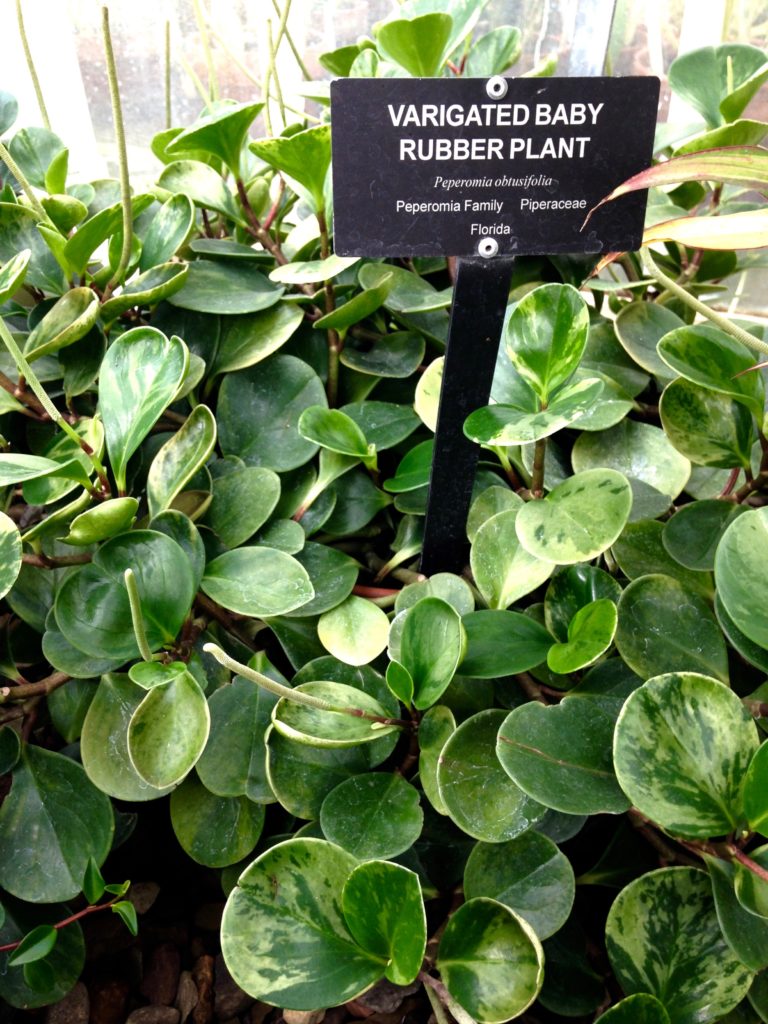
Propagating Peperomia
Peperomia are very easy to propagate, too. I’ll be adding more posts on propagation for each variety soon (it’s not one-size-fits-all), but in the meantime you can go through my step-by-step guide for propagating Watermelon Peperomia, which is super easy. Basically you can either propagate all peppies by cuttings as seen in that post or cutting a plantlet from the mother plant and letting it root in water (see below). Best of all? Free peppies either way!
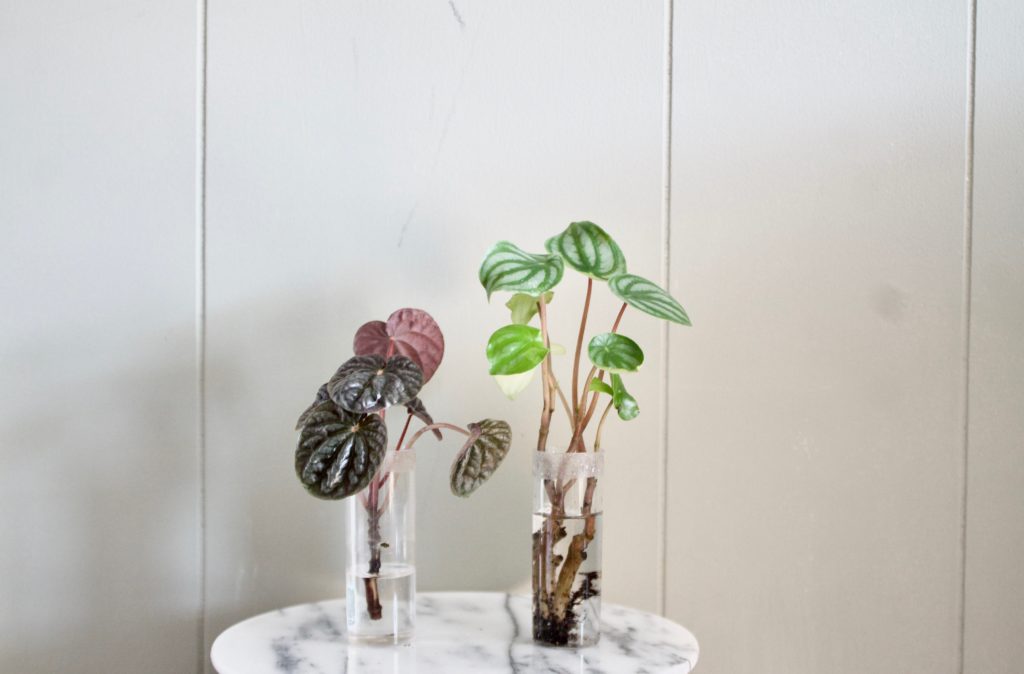
*This post contains affiliate links. I get a small percentage of those sales so I can keep creating awesome content for you.

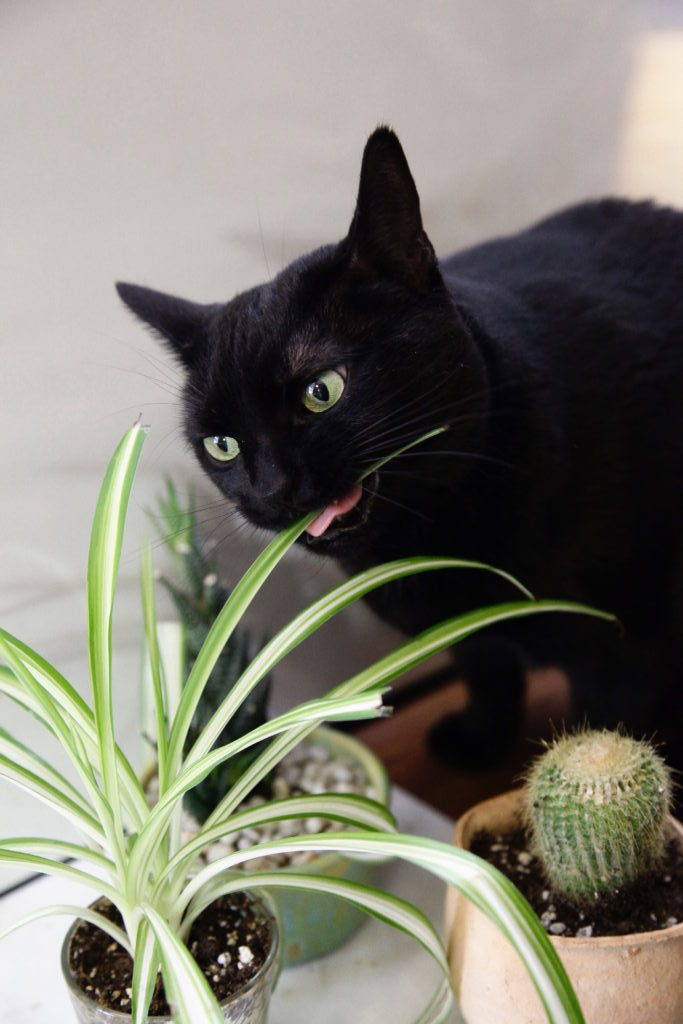
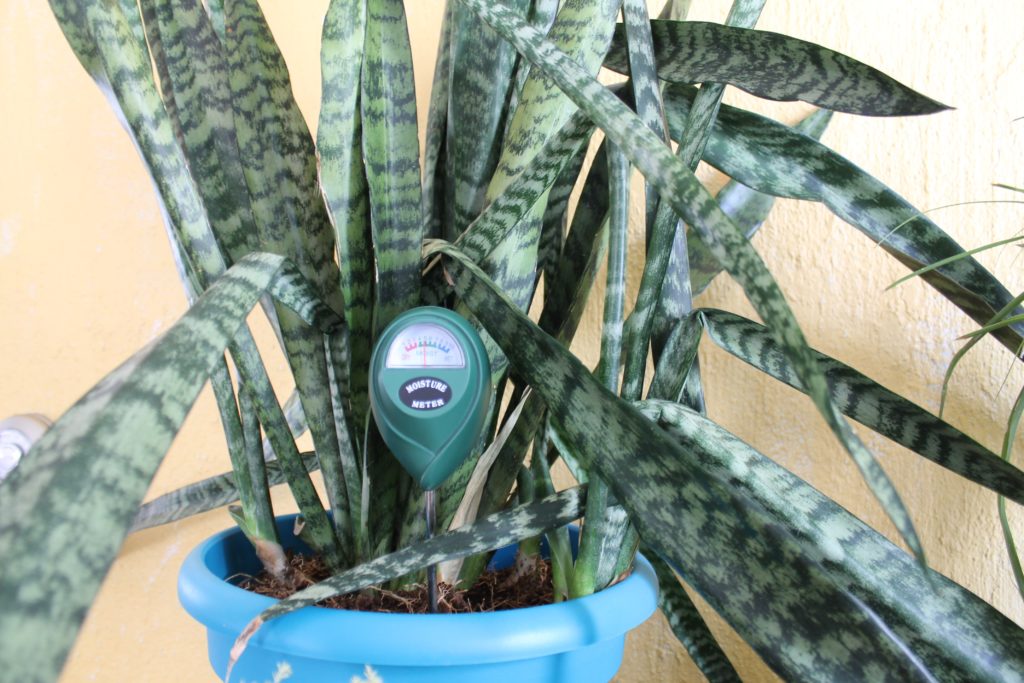
Can different types of peperomia plants grow in the same pot?
They can! As long as the varieties require similar moisture levels and sunlight, planting them side by side in the same pot will also help increase humidity.
So are all Peperomia plants non-toxic?
For the most part, yes, at least the peperomias most commonly seen in garden centers and greenhouses. The ones I talk about in this post I consider common, but if you find another you are unfamiliar with, I would be happy to help you identify toxicity. 🙂
Hi, is the RED TWIST Peperomia safe for cats? I can’t find anywhere online that’s specifically mentions this type. Thanks!
Hello! I am specifically wondering about the “Peperomia glabella” or it also might be known as the “Cypress Peperomia.” Is this safe for cats?
Hi Colleen, Peperomia glabella is still a part of the Pipericeae family and thus should be safe for cats. As with any plant, too many nibbles could result in stomach upset, so always watch if your cat is eating your plants. But this type of Peperomia is perfectly safe to have in your home.
I find the Watermelon Peperomia extremely visually appealing. I have researched quite a lot about it but, I do have some unanswered questions: How do I know if my Pep is being over/under watered? Lastly, do you have anymore tips to keep the plant healthy and happy?
I love them! I’m actually planning on doing a whole post devoted to them, since they’ve gotten so popular – so keep an eye on the blog. 🙂 In the meantime, yes – you’ll want to plant it in a pot with good drainage, and water when the soil is dry at the top. Overwatering kills them. They also like bright (not direct) sun, hope that helps for now!
I have a plant I’ve been told may be a variation of peperomia. If you’re well versed I’d love some feedback if there’s a way to get a photo to you!
I would love to take a look, Erin! Feel free to pop me an email or post to Leaf and Paw’s Facebook. 🙂
I’m from Brazil and just discovered peperomias today. Love your post and tips!
Thank you, Fernanda!
Toby
Have you heard of peperomia columella?
I have! I haven’t seen these in the States at all but they’re such a unique plant!
Hello! Thanks for the great info. Is the Peperomia dolabriformis (small succulent) safe for cats?
Hi! Because I don’t have any Peperomia dolabriformis near me I can’t be 100% sure, but I would be safe to assume they are safe for cats. Like any peperomia or pet safe plant I would still monitor your cat and make sure it doesn’t eat it in its entirely.
Thank you for the wonderful information! I bought a watermelon peperomia yesterday and one of my thoughtful kitties has munched through a bunch of leaves. Should I prune the chewed leaves or leave them alone? If I should remove the chewed leaves, where do I cut: the bottom of the stem or the top?
Hi Kisha! I had the same issue but my plant had multiple healthy leaves left. If your plant has many other leaves I would trim the eaten ones off and you can use those to propagate. Cut as low as you can the stem and remove it, the you can propagate them following my instructions. Let me know if you need more help!
Thank You
I have a pepporomia for almost a year.It grows beautifully until two days ago.I found two little plants just got broken right down at the base.I left them out in my porch.And I do not know why.Thanks.
Hi Yen, probably a change in temperature. Some peperomia are sensitive to temperature or weather changes, and can just start to decompose if they are not happy. You can try cutting off any healthy growth and starting over by placing the cutting it in water until roots form.
I love these little plants! They are surprisingly hard to find in my area – a local nursery is having a houseplant sale next week so fingers crossed I can find some.
Good luck! There’s also quite a bit on Amazon and etsy – I have some links in my shop. 🙂
Wow that was unusual. I just wrote an really
long comment but after I clicked submit my comment didn’t
appear. Grrrr… well I’m not writing all that over again. Anyways, just wanted to say excellent blog!
Thank you! I wondered about a plant I had started from a friend’s cutting. They thought it was a Swedish Ivy, but it did not look like one when I checked on line. Thanks to you and your great pictures, we now know our plants are Hope Peperomias, and are SAFE to keep around our pets! You helped SO much! Thanks!
Hope peperomias are so cute too! And you’re welcome. 🙂
Thank you for that!! I was looking for so long to identify my peperomia. ‘Jayde’
You’re welcome!
Hello!
All these are non toxic to pets?
Yes they are, Laura!
My variegated peperomia is fallen over with limp leaves. Im afraid to water it because I’m afraid it may be root rot. But it could also be underwatered. Any signs I can look for to decide which route to take?? I’m so afraid it won’t make it.
HI Alie, If the stem is mush, it may be a goner, and it was probably from inconstant watering. Peperomia are great but don’t like being too wet or too dry. Honestly I would take it out of the pot and check the soil – if it’s very dry, give it a nice soak and place in bright indirect light. Peps should also never get cold. If the soil is too wet, it may not bounce back.
Hello, I just bought a peperomia, and wanted to check about pet safety. I’m glad they are pet safe, as our cat Aries, likes to explore and chew, on new additions to our household. Mine is called a teardrop peperomia. Is that like the jayde one, you have puctured, or different?
Thanks, Kathi
Hi Kathi! Yes those are the same peperomia. Glad I can help!
hello! Thank you for the information, it was very useful. I am too a peperomia lover, but I was wondering if the “Peperomia Polybotrya” was also pet friendly. I have a little cat that love exploring and from time to time, also loves chewing in some plant. I just want her to be safe.
-Andrea
Hi Andrea! It is! That’s the raindrop peperomia. Remember that while a plant is deemed safe, a cat should never have access to chew on them regularly. Providing cat grass will help with their need for green.
Such an informative blog! Thank you. Came across to your blog since I got my variegated peperomia just today. ??
Hello, is Peperomia Albovittata ‘Rana Verde’ non-toxic for cats? I found online that it is part of the Piperaceae family.
-Anne-Marie
Hi Anne-Marie – yes that peppy is non toxic to cats.
awesome blog. i have a few peps myself and continuing to add (through trade only) lol.
this is very insightful and fun!
Thanks JJ!
My peperomia (its either a rotundifolia or japonica) is dropping leaves like crazy. It has good light humidity and soil conditions is not under or over watered. I am so confused??
Hi Julie! Hmm, are they yellowing or just dropping? Pep roundtifolia need to be able to dry out pretty well before getting watered, and when you do water them be sure to give them a good soak and not let them stand in water. Sometimes people are not watering thoroughly enough (like a few drops here and there) which can cause some yellowing leaves and distress.
Hi, this is a great blog! I hoped you could tell me what i can do with my Pixie Peperonia. Its really strong, growing fast but all the older, lower level leaves are yellow since quite a while. However, they are strong and firmly attached. It does produce lots of young leaves in the lower levels as well. I tried taking it to a slightly shadier place, since i didn’t water it too little or too much, but i feel that didn’t change anything. Do you have some advice? Greetings!
Thanks Julia! It could be too much light or overwatering. Too much light literally bleaches the leaves but overwatering can cause lower leaves to yellow. Eventually they’ll drop. These like bright but indirect light (like a few feet from a window) and keep it ever so slightly moist. I would keep it where it is (moving them around stresses them out) and just monitor your watering.
Hi there – thanks so much for your info. I just received my peperomia ferreyrae in the mail and: (1) It is extremely bent over (is this normal); and (2) does it like bright direct light because it is a more succulent kind? Thank you very much!
Hi Jennifer! It may be thirsty, sometimes peppies get shrively if they need water. And yes succulent-like peps prefer a tad more sun – just be sure it’s not harsh and direct. He should perk up soon, sometimes plants get stressed during transit and need a week to acclimate.
Hi there, I have a plant but not sure if it’s a peperomia. Can I send you a photo to confirm? Thank you.
You sure can! You can send it through Instagram or Facebook, Vivienne.
Thank you for your response. Can I email to you?
Hai,,what’s diferrence between peoeromia carperata rosso and peoeromia santorini ? ??
I believe “peperomia santorini” is a more green variety while “peperomia rosso” is a more metallic and silver coloring on the leaves.
Can my Peps survive in the living room? Thank you!
As long as they have good warmth, humidity and bright light they certainly can!
Hi, I just bought a Red Twist Peperomia from the local supermarket. Is this particular one safe for cats? The little card that came with the plant showed a ‘do not eat symbol’ on it. I did not notice this until I got home. Thank you so much!
Hi Ivan – It is! That should be a Peperomia verticillata and is safe but, like all houseplants that are toxic and safe, it’s never recommended that they are consumed by cats or dogs.
Is there a difference between a spoonleaf peperomia and a peperomia obtusifolia?
It’s just another common name, they are they same plant.
I have a pep that is very young and tiny. It is producing new leaves and it’s also flowering like crazy. But some of its older leaves are very faded. Is this the age of the leaf or too much light? It sits in a windowsill that gets direct afternoon sun for about an hour or two, but the window is frosted and mostly opaque. So I really don’t know if it’s getting too much light. It’s on the same shelf as a couple Rex begonias who are thriving, and also a red maranta who thrives as well. The baby pep seems to be thriving, going by the flowers and all the new growth. Thoughts? Should I move it out of the window? Leave it be?
Hi Rachel, honestly it depends which peperomia you have. Some tolerate higher light than others. Peps don’t really like direct light, they like bright light, but your frosted window should be diffusing it. These may actually just be older leaves. If it is pushing out growth that quickly, it’s common for older leaves to shed. I would cut these off and just keep watch. If newer leaves are becoming faded still, move it a few feet away from the window. Also be sure you are keeping it very lightly moist and fertilizing once a month – peps don’t really like to completely dry out and can use added nutrients.
Hello,
First I want to thankyou for all the information you have about pets and indoor plants. It has really help with my pet friendly plant army ?
I was hoping you could help me with some tips on caring for my ruby ripple peperomia, I have been searching online and have found very little information on this particular peperomia. It seems to be healthy and is currently flowering however, while it wasn’t a dark red when I got it six months ago the red colour in the leaves it did have has mostly disappeared. Is this normal for it during the winter months or is there something more I could be do to help bring out the colour?
Any tips would be greatly appreciated,
Thankyou ?
Hi Sarah! Sunlight is the main factor in color on ripple peps. These are a difficult variety of peperomia to care for, they like a lot of humidity, but can survive well in a home. Most likely the greenhouse you purchase it from had perfect lighting which is why the color was so pronounced, and that light is hard to replicate at home. I’m not sure what type of sun you are keeping it in, but medium, non direct sunlight is best, in a warm location. Feel free to send a pic to my IG or Facebook too!
Hi! very interesting. I just learned about the peperomia family, and I really missed out, they are really pretty. All the peperomia plants in your post are non toxic to pets right? are they also non toxic to humans? 🙂
Hi Yara – They are non-toxic to both, yes, but I still wouldn’t recommenced pet or child eating them.
Hallo!
I think my pep is a caperata, but im not sure. Could i send you photo?
Sure! By IG or FB works.
Hi! Thank you for this helpful information. Are Ruby Peperomia/Ruby Cascade Peperomia safe for cats as well? I am having a difficult time finding information on whether it has similar properties to other Peperomia plants.
It is Mary – it’s considered nontoxic.
Hi! I just got my peperomia caperata (red ripple), and how can you tell if it needs water or if its overwatered? It was lush and healthier when I got it, but I guess given the change in weather and environment (from cold outdoor shop, to my bedroom with low lighting) it’s not looking as great. Any advice? Some of the stalk/stems of the outer leaves changed from dark red to lighter/grayish pink. But there’s new growth in the middle. How often would you say I need to water my plant? Thanks!!
Hi! First off, they don’t really like low light and definitely hate cold temps. I would move it to a brighter location or get a grow light honestly, that will extend the life because it doesn’t sound very happy right now. As far as watering, water only when the stems are a tad limp and soil is mostly dry – you can get a moisture meter (available on my SHOP page) to help you see when the deeper soil is dry. New growth in the middle is a good sign, but caperatas are tricky so a grow light would be the best for it.
Is Peperonia “Rubella” safe for rabbits to consume?
Hi Sonjia, I would not let rabbits consume any houseplant for a couple reasons – the ASPCA website doesn’t list any plants as toxic/nontoxic and rabbit are notorious herbivores and may consume an entire plant. I would keep all plants out of reach of any free-roaming (indoor) rabbits.
Okay thank you so much for the reply. I just started getting into house plants but wanted to make sure of any precautions with my indoor Bunny who is on the older side.
My red edged peperomia recently bloomed and had long textured stems. One fell off and I was playing with my cat with it when it occurred to me that the stem may not be as safe as the leaves. She didn’t eat any of it, just bit and whacked it while playing. Will she be okay?
Most likely as my cats have played with these stems too. They do hold quite a bit of pollen which may be irritating to the nose/lungs though so keep an eye on her and call your vet if you see her acting weird, but all parts of this peperomia are considered nontoxic.